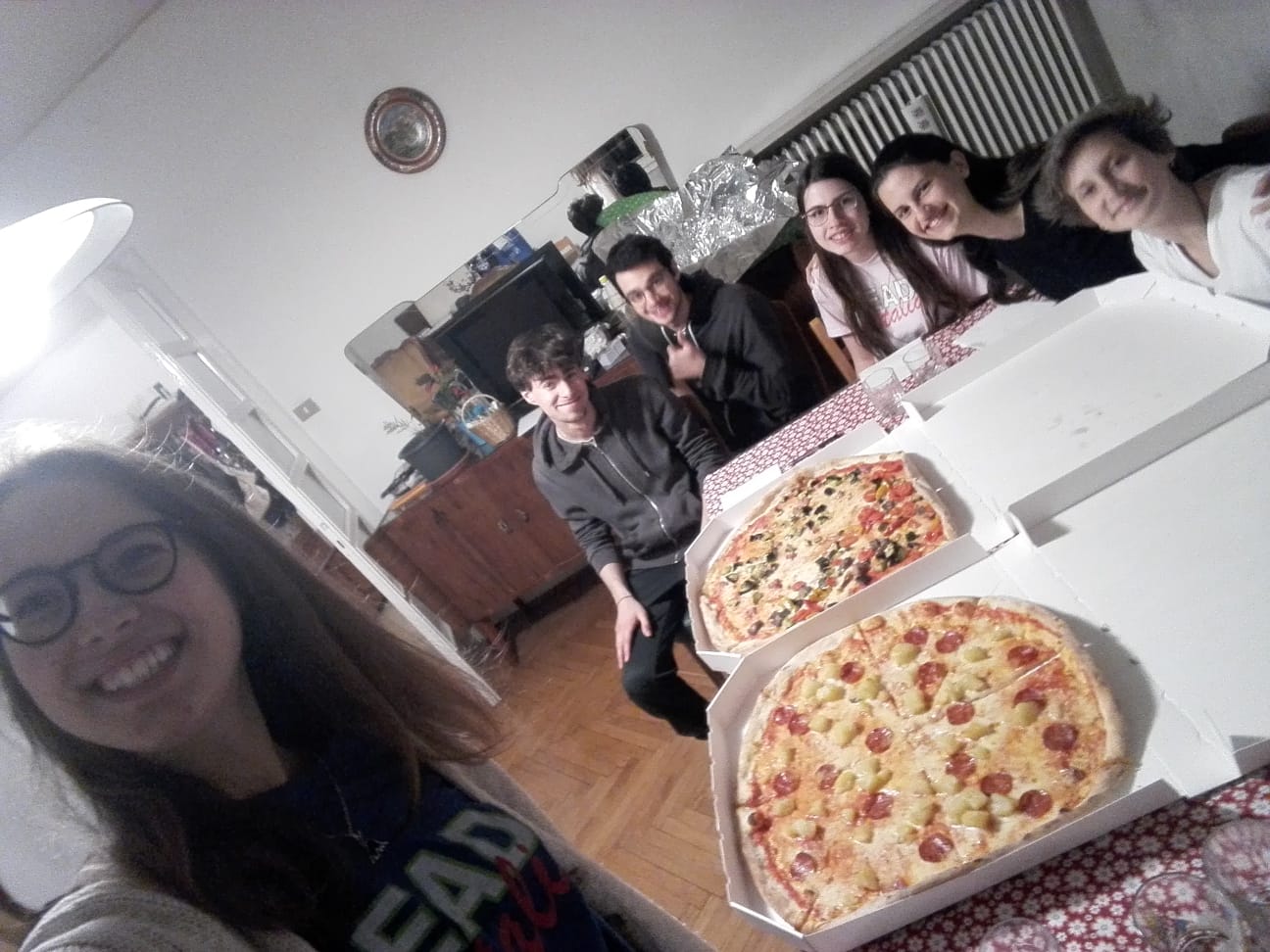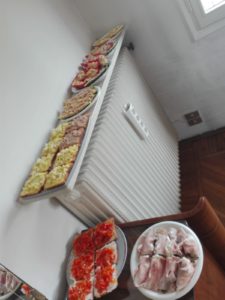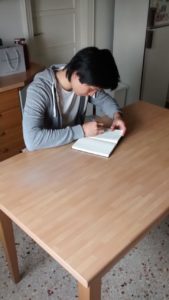
28 Apr Monday Easter by LEADit Alumni
By Tosca Naletto.
Dear reader, do you remember about LEAD Italia Alumni? If yes, you can keep reading this article; if your answer is “no”, then my suggestion is to look into the past articles where we told about our amazing experience in Israel. I can say that we, as Alumni, were born there, among the buildings of the city of Tel Aviv and the camels in the desert.
But it’s not enough to be born or to wear the Alumni pink t-shirt to actually be an Alumno: you must work, collaborate, share with one another, inform yourself, grow. These are not simple goals to achieve especially when the distances that separate us are Treviso-Milan, Castelfranco-Tourin, Conegliano-Padua. When the calendar is full of university courses and extracurricular activities, new routines and new friendships or the last class of LEADit ambassadors to support. It’s difficult also because we are the first group of Alumni; we don’t have older fellows to get inspiration from and our future is yet to be written.
Maybe this is our strength: we have total freedom in deciding what to do and most of all, we have a tremendous willingness to do so! We were so into this in the first months that we were confused by the numerous ideas we came up with every day: projects of collaboration with LEAD (Israel), fundraising, leadership journeys, cooking courses, meeting with famous people, in-company visits, online courses, vertical farming!
Immersed in this fertile brain storming we hence asked ourselves what our identity was, our long term goal, that “why” that make us still chose LEAD regardless of the other opportunities. The answer was the journey that each of us had shared, that road that we walked after we chose to be leaders, that presented and will present many obstacles that we managed and we will manage to overcome discovering aspects of ourselves that were unknown to us, mutually supporting each other.
We choose LEADit Alumni because it let us gain skills and knowledge that nobody else could teach us out there.
To sum up: why LEADit Alumni? First of all, because of the unique relationships among its members; second, because all that we can learn in it.
Where? In Treviso, looking at the walls of the city.
How? With the workshop on April 22nd, on Monday Easter, that we entitled “The rebirth” to indicate that, after months of confusion, we now know what we want to do.
More specifically, there were three activities characterizing that day: we wrote a letter to a mate who bothers us, we invented a meal with mysterious ingredients, we worked on the SML model (Self Managed Learning) and stipulated a contract with ourselves.
The first activity, writing the letter, was conducted by Greta: we couldn’t choose a better person to run this! In fact, Greta’s LEADit project – “Go through yourself” – allowed her to create several activities that, run with the help of her team, could bring someone to reflect on himself/herself, to “go through” oneself. I believe that personally experiencing one of the activities of that project that we saw raising and growing, was something very meaningful to Greta and for all of us, Alumni.
According to the “LEAD style”, the activity wasn’t easy at all: each one’s goal was to identify a person who, within or outside the Alumni, caused us some discomfort, someone we didn’t like 100%. We were supposed to write a letter to this person – that wouldn’t have not read it anyway – listing the behaviors, the thoughts, the flaws that are difficult to accept. We then chose the aspect that we most dislike about this person and we mimed it. We hence mimed the opposite aspect in front of a chosen mate in the group. The Alumni mate took note of the feelings he/she felt while watching the friend miming. Finally, we shared the thoughts of those people miming and those who were observing.
If you are asking yourself what is the goal of writing a letter to someone who will never read it or to tell a person what you don’t like about herm believe me, we asked ourself the same questions while Greta was instructing us. But, now that everything is over, I can try to clarify what we learnt: what we consider a flaw, is not something that the other person did wrong or that we need to force to change in her because it bothers us. That discomfort, in fact, is ours and tells something about us: it tells about our flaws, about our uncertainties, our pains that we didn’t overcome. I try to explain myself in other words: I chose a person who bothered be because of her willingness to be always at the centre of the attention. While miming that flaw, I felt a misfit, at discomfort, observed by everyone in the room. I hence understood that it’s me who is not entirely ready to be at the centre of the attention and to show the others what I can do.
 The second activity aimed at challenging our creativity in cooking! Pietro M. suggested us to bring some ingredients of our choice with our revealing what we had chosen hence, at lunch time, we put them on the table. We divided ourselves into three groups – appetizer, first course, main course – and each group planned a course using the ingredients at disposal, hoping that the other groups didn’t need the same ones. In the pictures you can see our amazing final result and you can believe me when I say that we had so much fun! Most of all, we taught Francesco, who doesn’t like cooking, few easy recipes, fast, vegan and very tasty!
The second activity aimed at challenging our creativity in cooking! Pietro M. suggested us to bring some ingredients of our choice with our revealing what we had chosen hence, at lunch time, we put them on the table. We divided ourselves into three groups – appetizer, first course, main course – and each group planned a course using the ingredients at disposal, hoping that the other groups didn’t need the same ones. In the pictures you can see our amazing final result and you can believe me when I say that we had so much fun! Most of all, we taught Francesco, who doesn’t like cooking, few easy recipes, fast, vegan and very tasty!
The last activity, but not less important than the others: have you ever heard about SML? It stays for “Self managed learning”, it’s a model that allows the identification of the goals for the future and to understand what is needed to learn at to achieve them; to identify the means and the ways and the timing to do so, and, in the end, to build some test to monitor the progress and verify the achievement of the goal.
The model is really helpful if you consider that we are used to think that we always need somebody, outside of us, to tell us what to study, who can test us, who explains to us given that he/she is more knowledgeable. However this is a process that sometimes is not effective because it relies on someone else. Well, in the SML model it’s you who becomes your own teacher, it’s you who chooses what, how, when, where to study what you are really interest in. We Alumni believe that this is the real meaning of knowledge, as well as the most effective way for learning.
In more details, we asked ourselves five questions:
- where do I come from?
- where am I right now?
- where do I want to go?
- how do I achieve my goals?
- how will I know if I have achieved them?
I belline that it’s clear that these are not easy questions: they require time, reflection, honesty and willingness to get involved. It’s not a coincidence that during the workshop we managed to answer only to the first three questions: we preferred to allow ourselves time to deeply reflect and to share with the answers with one another to mutually support us. We committed to answer to question 4 and 5 at home to then sign a real contract that contains all the things we want to learn.
The SML activity was guided by Francesco who wants to become an entrepreneur. According to him the entrepreneur can’t be new to concepts such as ethics, social commitment, self-improvement, improvement of the others, responsibility. These are concepts that clearly brought Francesco to offer himself as facilitator in this activity that I suggest you to do: who are you right now and what would you like to become?
We Alumni know it already a little bit, but we can’t wait to discover what we will be able to do in the future!
